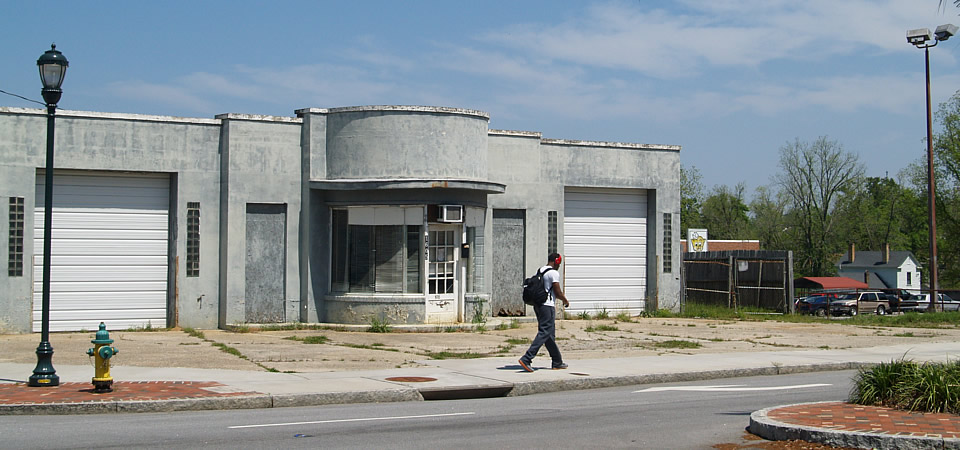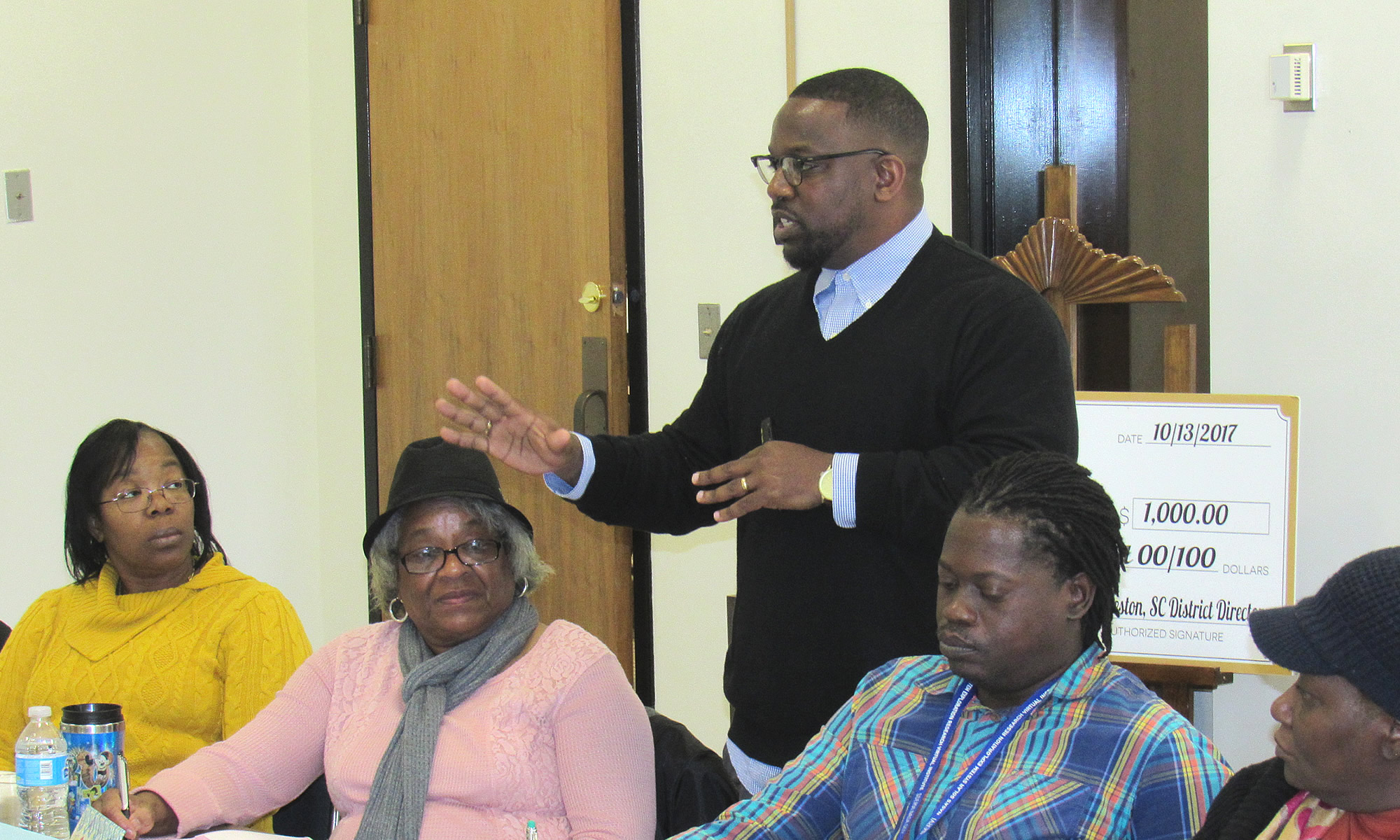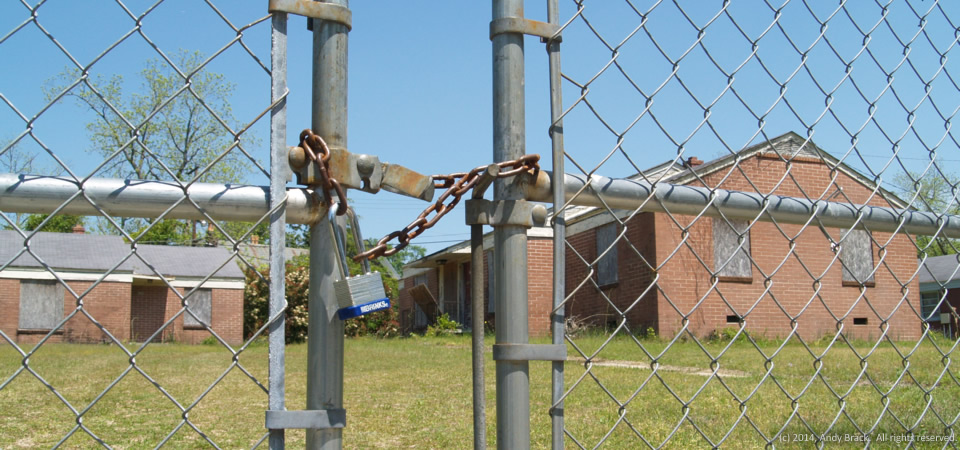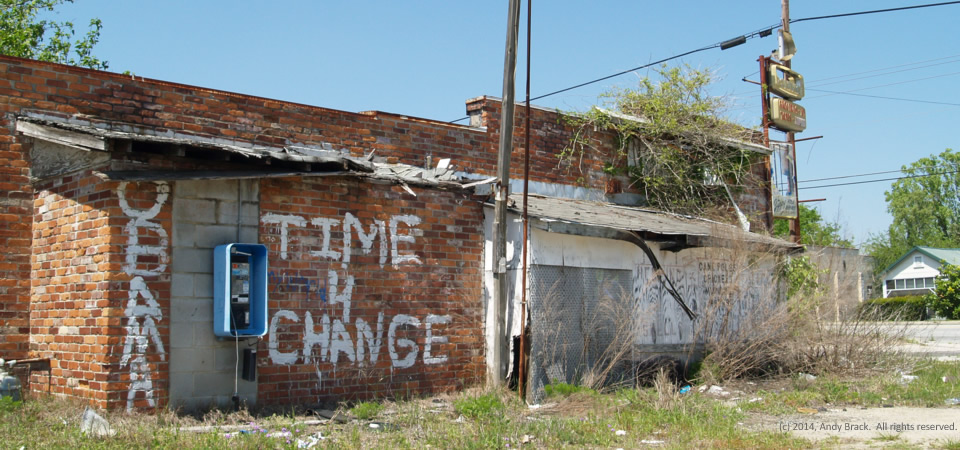
This crumbling corner on Russell Street near the center of downtown in Orangeburg, S.C., illustrates the challenge that the inner city is having to attract businesses to lure residents to spend time in their downtown. Despite an attractive central downtown renovation and business like Piggly Wiggly, which you can see in back of this apparently empty old service station, there are few big-name retailers to draw people downtown.
Copyrighted photo was taken April 23, 2014 by Andy Brack. All rights reserved.



